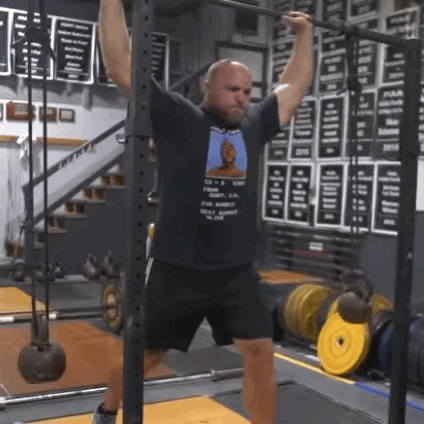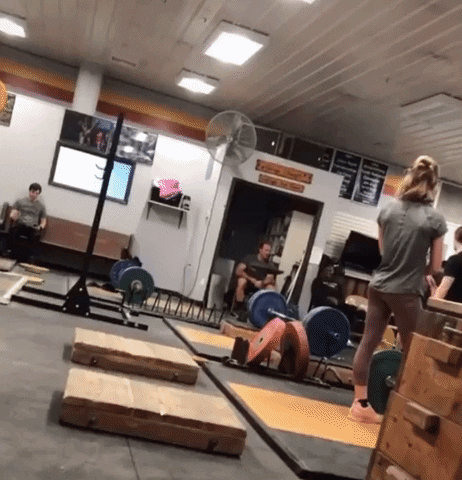Understanding Reflexive Strength
FREE SPEED & POWER WORKOUT!
Download by entering below

Reflexive Strength
The concept of improving athletic strength can be complicated. SInce we released the Sports Performance Bible, we have got hammered with questions behind the specific topic of reflexive strength work and what that entails. Athletes and coaches have seen us doing drop DB snatches, plate snatches to a box, and even training things like the Euro-step in specific manners. People are curious about things around reflexive strength and how it helps enhance athletic strength capability.
We want to go into the educational aspects of reflexive strength training and how it can help athletes become better.
Educational Background
Let’s first analyze that if it is reflexive strength training, what are reflexes? Think of sitting at a doctor’s office and the doctor using a rubber tip hammer to hit the knee. The dangling leg moves. That is considered a basic reflex. So where else might this occur?
Now let’s think of walking down the street. Imagine walking down the street and your arch-nemesis sitting on a bench puts their foot out as you walk past them to trip you. Your back leg gets caught and your front leg stumbles forward. This is called the stumble reflex. So when the back leg, the swing leg, gets stuck, your body has a reaction to put the front forward to not eat it. Some people may still eat it, but if the reflex is firing very quickly that reaction will save people from face planting.

Another reflex is known as the cross-extensor reflex. The cross-extensor reflex is when a person is running, as they plant their leg and the swing leg is in the air, the body will have more tension in the planted leg because of the cross-extensor reflex. This is an area that benefits from a drop DB snatch to hip lock to have better capability in this positioning.
These are instinctual patterns that are much more native to the body. They happen by bypassing the brain. Bypassing the brain happens through a bundle of neurons, known as Central Pattern Generators (CPGs). Central Pattern Generators were brought to the light by Charles Sharington as a concept. The concept is now well known. Essentially the bundle of neurons bypass the brain and signal to the body what to do at a very fast rate. In parallel, and to a degree in conjunction with CPGs, is Peripheral Self-Organization. Think of PSO as a capability achieved through training and general living that will inhibit neurons to lead to these proper, desirable reflexes.

These two concepts of PSOs and CGPs and how they play a role in the stumble reflex and crossed-extensor reflex is happening faster than if we were doing a cognitive movement. For instance, if we did a back squat, the actual action of the efferent signal from the brain to the muscles to execute the task of squatting. However, when things like a running back being tripped up on the field but they balance out of it, that is the stumble reflex coming into play, which happens faster than the maximal voluntary action that is partaken in when performing a back squat. This concept is extremely important behind reflexive strength training.
Chunking
As weird as it sounds, chunking are skills that we use when trying to memorize things. Memorizing a phone number (pre-smart phones and cell phones), people chunk the first three digits and chunk the last four digits, memorizing smaller pieces to be put together into the whole.
In competitive sport, chunking takes us into finding pieces of competitive movements in various sports and finding the instinctual patterns that happen on a grand scale so that we can break that down into chunks that we take into reflexive, compound movements.
Take Travis Kelce, a phenomenal tight end, running full speed down the field, plant, stop, box out a defender, reach, catch the ball, rotate and take the reception to the endzone. That is a pattern we can break down and look at. Think about it. If we do a drop step into a plant and then rotate a plate, we chunked the reflexes into a movement that can be performed in the weightroom which can help performance.
Complexity
Recognize that these reflexes are essentially semi-autonomous to autonomous; they happen without the brain really forcing the body to make it happen. And here is where the complexity really comes into play. Think about movements that are rhythmic like chewing or flutter kicking. Rhythmic movements is where CPGs come into play.

Think about walking, into a gallop, and then into a sprint. What happens is the CPGs essentially override other neurons from the walk to the gallop to the sprint. When we analyze the chunks of movements or rhythmic patterns (think about a shot putter or discus thrower first learning the pattern of the movement–they look terrible; now think of an Olympic shot putter or discus thrower–they are much more rhythmic and autonomous in their movement, in that it happens much quicker than the maximal voluntary action would occur). As a coach, we have to see these chunks, these instinctual movements, and take the concepts to be used in the weightroom to enhance overall performance.

Then we need to use concepts such as hypertrophy strength training and maximal voluntary actions and apply them to reflexive movements. Meaning that we want to create this larger contractile muscle through maximal voluntary actions and then over time the goal is to make the larger contractual muscle to coordinate quicker without voluntary action–THIS is where reflexive strength training comes into play.
Application
For simplicity’s sake, let’s start with beginner, intermediate, and elite athletes as demarcations for training. With beginner athletes we want to focus on eliciting neurological adaptation and also training some muscular morphology. This means we will focus on maximal voluntary actions, like a 5x5 back squat for the first six months; we know based on physiology research that the adaptation that occurs to increase strength over the first 6 months is due to neurological coordination improvements. People’s bodies get smarter; communication lines open up between the nervous system and the muscles. After 6 months, we do see the musculature start to grow. Bigger muscles lead to greater power output. The first 2 years of training will primarily focus on maximal voluntary actions, bodybuilding style movements, and occasionally we will put in once a week five or six sets of reflexive strength training work. A reflexive strength movement for a novice athlete will be simple. Something like a single-leg RDL into a snatch overhead with a band while holding a hip lock position. This will increase the cross-extensor reflex and elicit a co-contraction in the hip.
This then brings us to intermediate athletes. We are talking about athletes that may be 18 months (if more coordinated) all the way up to three and a half years. Think of someone who started training in middle school and is now in the twilight of their high school career. In training we will continue to focus on MVA, hypertrophy based work, but we are going to begin to introduce more complicated reflexive work as well as more volume. For instance, we progress the snatch with the band to a drop DB snatch into a hip lock, a more advanced movement. We will also start to introduce more advanced plyometric movements. We will also really look at the sport(s) the athlete is playing and what reflexive exercises that chunk best for transfer to their competitive endeavor.
Finally, we get to the elite athletes or people with greater experience in the weightroom. Understand that the central fatigue is going to happen at a higher rate with reflexive training; the nervous system fatigues faster with reflexive movements. Elite athletes will still do MVA. But the next step is making reflexive work even more complicated with two days designated to it. They should be doing reflexive work on their heavy day, their athlete day, and on their dynamic strength day. That might entail a db drop snatch into a forward step on a box. It might be a side plate snatched into a step on a bench. It looks like working on different angular movements.
We want to really chunk out movements that are specific for football, basketball, soccer, and the list goes on. Think of using a reflexive strength movement that resembles the Euro-step to improve someone’s athleticism for competitive play. Basketball players take note.
Recap
We know this is a really, really, really high level concept. Reflexive strength work will drastically improve athletic strength and has been minimally discussed in the world of strength and conditioning. It is key to know CPGs (central pattern generators), PSO (peripheral self organization), and various reflexes that can be chunked from complex movements to be turned into exercise movements that can best be applied to sport performance. The reflexive strength training movement is real. Be a leader and be an early adopter (and let us know how it goes by commenting down below).
Related Posts
Blog Topics

Yo, It's Dane
Welcome to the Garage Strength Blog, where it is my goal to provide you with the experience and knowledge I've gained in the strength and conditioning world over many years of learning from both successes and failures. I train elite-level athletes in a multitude of sports from the high school to professional levels, already producing 5 Olympics and 30+ National Champions. If you want to be the next champion I train, check out my strength programs below!
Start Training With Me

Join for free educational videos EVERY WEEK on strength coaching and athletic performance



